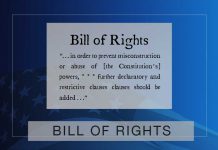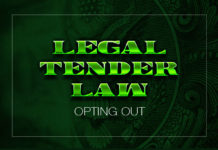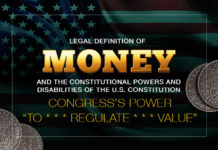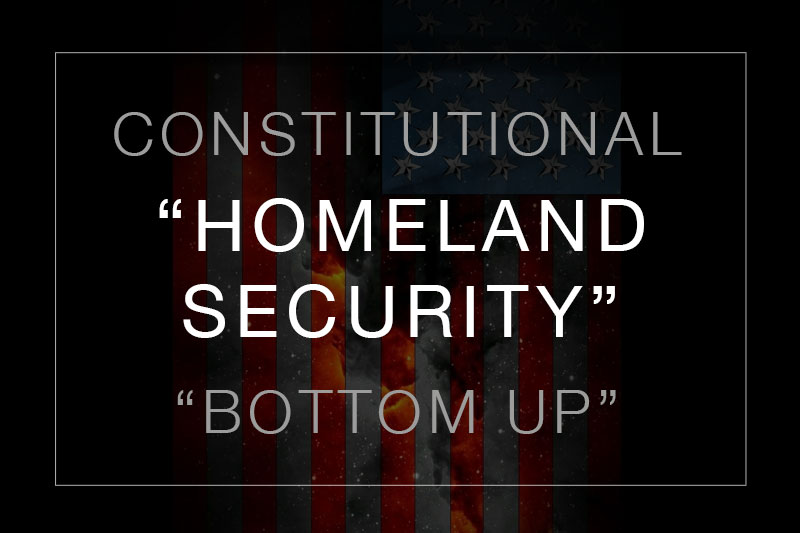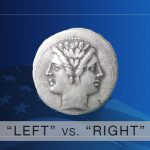Last Updated on October 2, 2021 by Constitutional Militia
An old adage warns us that “those who refuse to learn from history are condemned to repeat it.” This is not because of some inexorable, mysterious decree of Fate, but because (as the ancient Greek historian Thucydides observed) “the kind of events that once took place will by reason of human nature take place again.” One need not look to the distant past, either, to glean material predictive of the immediate future.
For an outstanding example, patriotic Americans can find many ominous, yet also instructive, parallels between their situation today and the predicament of the Plains Indians during the late 1800s. These parallels are particularly striking where money and banking are concerned. For example:
Just as the Establishment of the late 1800s was intent on extending its version of “civilization” to—or, perhaps more descriptively, running it roughshod over—the Tribes, so too does the contemporary Establishment intend to bring to—or, perhaps more descriptively, to impose upon—common Americans a new and improved brand of “civilization,” under the trademark of “the New World Order.”
As to money and banking especially, this is an old song, as fallacious as it is familiar. Innovations in the manipulation of “currency” and “credit” are always touted as the products of advanced thought; whereas gold and silver are invariably derided as “barbarous relics” from a primitive age. And the Federal Reserve System—the apogee of modern central banking—is everywhere praised as the great exemplar of “scientific” management of money. Yet gold and silver are obviously no more “barbarous relics” than the free market itself, because they are the media of exchange that a truly free market always chooses (otherwise, their use as money would not so often have been inhibited, even prohibited, by governments and central banks). And the main tenets of central banking—(i) that the supplies of “currency” and “credit” must expand step by step with production of goods and services, so as to maintain a stable “price level;” and (ii) that the self-destructive tendencies of fractional-reserve banking can be fended off by cartelizing the banks under governmental aegis and supplying them with an open-handed “lender of last resort”—are no more “scientific” than the utterly discredited theories of “central economic planning,” of which central banking forms a subset. Or, for that matter, no more plausible than dialectical materialism, historical determinism, and the other assorted pseudo-intellectual claptrap of Marxism—which shares a mutual affinity with central banking, according to a key plank in The Communist Manifesto that calls for “[c]entralization of credit in the hands of the state, by means of a national bank with state capital and an exclusive monopoly.”
Just as the Establishment of the late 1800s disparaged the Plains Indians as incorrigible “savages,” stubbornly and stupidly standing in the way of “progress,” so too does the contemporary Establishment dismiss average Americans as a culturally backward and politically reactionary booboisie whose outmoded ideas, traditions, and way of life retard social evolution.
In the field of money and banking as well, proponents of the precious metals as money are roundly derided as doctrinaire “gold bugs,” economic “Neanderthalsm,” or worse; whereas the Federal Reserve System’s touts are fulsomely described as “enlightened.” Yet, as a form of “central economic planning,” central banking is economically atavistic in theory and ultimately unworkable in practice, because it always operates on the basis of ignorance, in comparison to the wealth of relevant information available only to the free market. And, as a species of unrepresentative, elitist—and, if the truth be told in the bluntest possible terms, fascist—bureaucracy, politically privileged central banking is far removed from the “Republican Form of Government” that the Constitution requires the United States to “guarantee to every State in this Union” (Article IV, Section 4).
Just as the Establishment of the late 1800s denuded the Indians of their Tribal sovereignties and degraded them to ill-treated “wards” of the General Government, so too does the present-day Establishment decry America’s National sovereignty as a ridiculous anachronism and a galling impediment to the New World Order, and plan to set it aside—first, through regionalization, involving the economic and political merger of the United States, Canada, and Mexico; then, through hemispheric to finally full-fledged global government.
Where money and banking are concerned, globalization is also an imperative. Indeed, the present push for globalization of national economies and then polities probably results more from what the Establishment perceives as the necessity to globalize the contemporary monetary and banking systems than from any other cause. The economic reason is that a global “lender of last resort,” and perhaps a source of some altogether new “currency” and “credit,” will be required to keep the major central banks of various countries—the Federal Reserve System included—afloat in a global liquidity crisis. After all, to stave off the collapse of major banks within various countries during domestic liquidity crises was the purpose of setting up independent central banks in each nation. And the same strategy applies in spades to an international liquidity crisis among national or regional central banks that now operate without an apex to their pyramid of “currency” and “credit” expansion.
The political reason for the globalization of money and banking is that, although the Federal Reserve System now functions as a de facto global central bank (at least to the extent that its “currency” is employed as a “reserve” by most other countries), a truly global central bank, functioning both de facto and de jure for the world as a whole, cannot be the instrument of only one nation or regional grouping of nations. For that nation or group could change its political views on money and banking at any time, throwing a money wrench into the globalist machinery. True enough, if a national central bank, operating as a de facto global central bank, returned to some form of free-market gold or silver standard, the common people of the whole world would eventually benefit. The Establishment, however, would lose out, because its position depends on monetary and banking systems utterly divorced from gold and silver, and thereby from the economic discipline of the free market. And, because the Establishment cannot take that chance, it must promote the globalization of money and banking.
The pressing legal reason for the globalization of money and banking is that the present de facto global central bank—the Federal Reserve System—is subject to the Constitution of the United States, which mandates “gold and silver Coin” as the only official “Money” and “Tender in Payment of Debts” (Article I, Section 8, Clause 5 and Article I, Section 10, Clause 1). An international liquidity crisis could easily turn into an American constitutional crisis, in which the illegality of the Federal Reserve System could be identified as the cause of the economic chaos, and the System’s political supporters the culprits. Such a situation could sweep into office a political movement that would reverse a century of monetary and banking policy, and return the economy of one major country—and, soon enough, the economy of every other country dependent upon it—to money bottomed on a specie standard and banking stripped of the abusive special privilege of “fractional reserves.”
For all these reasons, to maintain its power the Establishment must eventually separate and insulate the present systems of money and banking from each and every national sovereignty. That is, each and every national sovereignty must be denied jurisdiction over money and banking, even within its own territory. The monetary and banking systems must themselves become wholly independent—and, in fact, private—sovereignties, with global extraterritoriality allowing them to operate within every nation but subject to none. They must become totally unresponsive to (as well as unrepresentative of) the popular will everywhere, yet capable of imposing their will on the people anywhere.
Just as the Establishment of the late 1800s declared the Plains Indians to be “hostiles” if they dared to defend themselves and their homelands against economic, political, and cultural aggression, so too does the contemporary Establishment denounce Americans as “extremists” if they strenuously oppose—even only through force of argument, rather than force of arms—the systematic destruction of their country and impoverishment of her citizens.
Perhaps nowhere is the historical parallel more patent than with respect to money and banking. Today, of course, “gold bugs” are subjected only to ridicule in the mass media. In the early 1930s, though, Americans who resisted the General Government’s seizure of their gold were most definitely treated as “hostiles”—even to the extent of having President Franklin Roosevelt apply against them the Trading With the Enemy Act of World War I. Even now this statute remains on the books, providing that “[d]uring time of war, the President may, through any agency that he may designate, and under such rules and regulations as he may prescribe, * * * investigate, regulate, or prohibit * * * the importing, exporting, hoarding, melting, or earmarking of gold or silver coin or bullion” (Title 12, United States Code, Section 95a(1)(A)). In this era of a perpetual (albeit undeclared and therefore unconstitutional) “war on terrorism,” during the course of a monetary and banking crisis this statute could be employed just as it was in the 1930s, on the strength of the precedent created at that time. And, once more, common Americans who held gold would be falsely designated their own country’s “enemy.”
Finally, just as the Establishment of the late 1800s employed certain historically proven techniques of oppression to beat the Plains Indians into submission, so too does today’s Establishment—albeit with far greater subtlety, sophistication, and sinister cynicism. The next part of this commentary will explain how. For part 2 click below.







